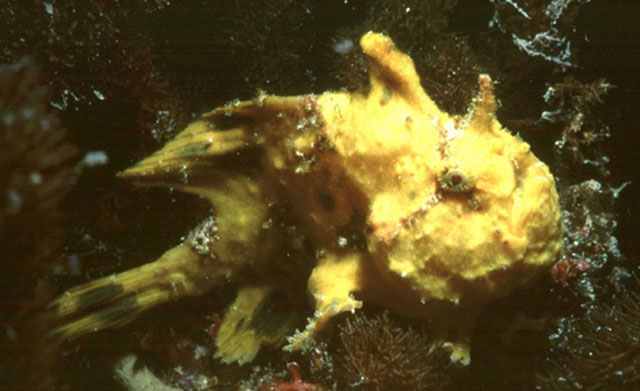| Antennariidae (Frogfishes) |
| 10.2 cm SL (male/unsexed) |
|
reef-associated; brackish; marine; depth range 18 - 50 m, |
| Eastern Atlantic: Senegal to Congo (Ref. 3585, 57225), including the Cape Verde (Ref. 3585). |
|
Dorsal spines (total): 3-3; Dorsal soft rays (total): 11-14; Anal spines: 0-0; Anal soft rays: 6-10. Diagnosis: body short and globose; mouth large with many small, villiform teeth; skin rough, covered with bifurcate dermal spinules; pectoral-fin lobes attached to sides of body; illicium nearly twice as long as second dorsal-fin spine (Ref. 57225).
Description: lure large and laterally compressed, attaining in some specimens up to 50% of shaft length of illicium; TL of illicium 18.9-29.6% of SL; second and third dorsal-fin spines slightly curved backwards, second spine attaining 10.8-16.3%, and third 21.3-26.4% of SL; eye diameter 4.6-5.8% of SL (Ref. 57225).
Coloration: red in life, with dark, round spots scattered over body and fins, those on belly smaller but more numerous; preserved specimens light beige, yellowish or brownish, covered with irregular-shaped whitish and dark spots; large round, brownish or black spots, particularly well developed on unpaired fins and belly, and sometimes, short dark streaks around eyes (Ref. 57225). |
| Inhabits coastal waters (Ref. 26999). Occurs in marine or brackish water (Ref. 97225). Feeds on fish and shrimps (Ref. 28587). |
|
Least Concern (LC); Date assessed: 09 May 2013 Ref. (130435)
|
| harmless |
Source and more info: www.fishbase.org. For personal, classroom, and other internal use only. Not for publication.

